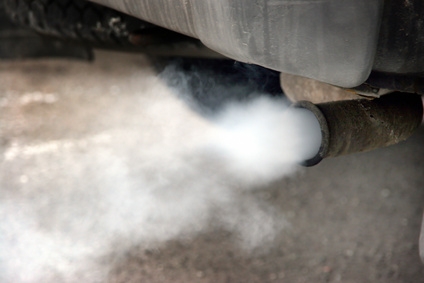
Exhaust smoke is a collection of gases that are by-products fuel combustion in the engine of a vehicle. The gases travel through exhaust pipes and usually exit the vehicle through the tailpipe. The pipes are designed to move the smoke, which sometimes is toxic, away from occupants inside the vehicle. There are a few different ways to determine the nature of problems your car may be having depending on the quality of the exhaust smoke. Determining the color of the smoke, which may be white, black, gray, or blue, can help resolve unanswered questions.
Check for white steam-like smoke. When it is cold outside, you may notice this kind of smoke when you first start your engine. As the car heats up the smoke should disappear. If it does not go away after three to five minutes, there may be a problem.
Check the amount of antifreeze in the radiator and overflow bottle. There are gaskets that keep antifreeze from flowing into the cylinders. If antifreeze does get into the cylinder area, a white steam is formed and exits through the tailpipe.
Check to see if antifreeze has mixed in with the engine oil. You can do this by looking at the oil dipstick. If it has mixed, it will look like a chocolate milkshake. Be sure to not start the vehicle if the antifreeze and oil have mixed, because this may cause serious problems with the engine.
Look for black or gray smoke. This smoke is caused by fuel coming into the cylinder area and being incompletely burned. You may not be getting good fuel mileage if you have black or gray smoke coming from the tailpipe.
Check to see if excess fuel has mixed with the engine oil. You can do this by looking at the oil dipstick. Don't start the vehicle if a fuel smell can be detected in the oil. Call your mechanic immediately and tell him what you discovered.
Check your owner's manual to make sure that you are using the proper grade of fuel. You may also have to check for faulty nozzles and faulty injection pumps.
Check for blue smoke, which is produced when engine oil comes into the cylinder area and gets burned with the fuel air mixture. It is found more often in old cars and cars with lots of miles on the odometer.
Check O-rings, seals and gaskets to make sure none of them has failed. These are all made to keep oil from entering the cylinders.
Use thicker-weight oil. An oil additive may also help in the reduction of oil leaks into the cylinder.